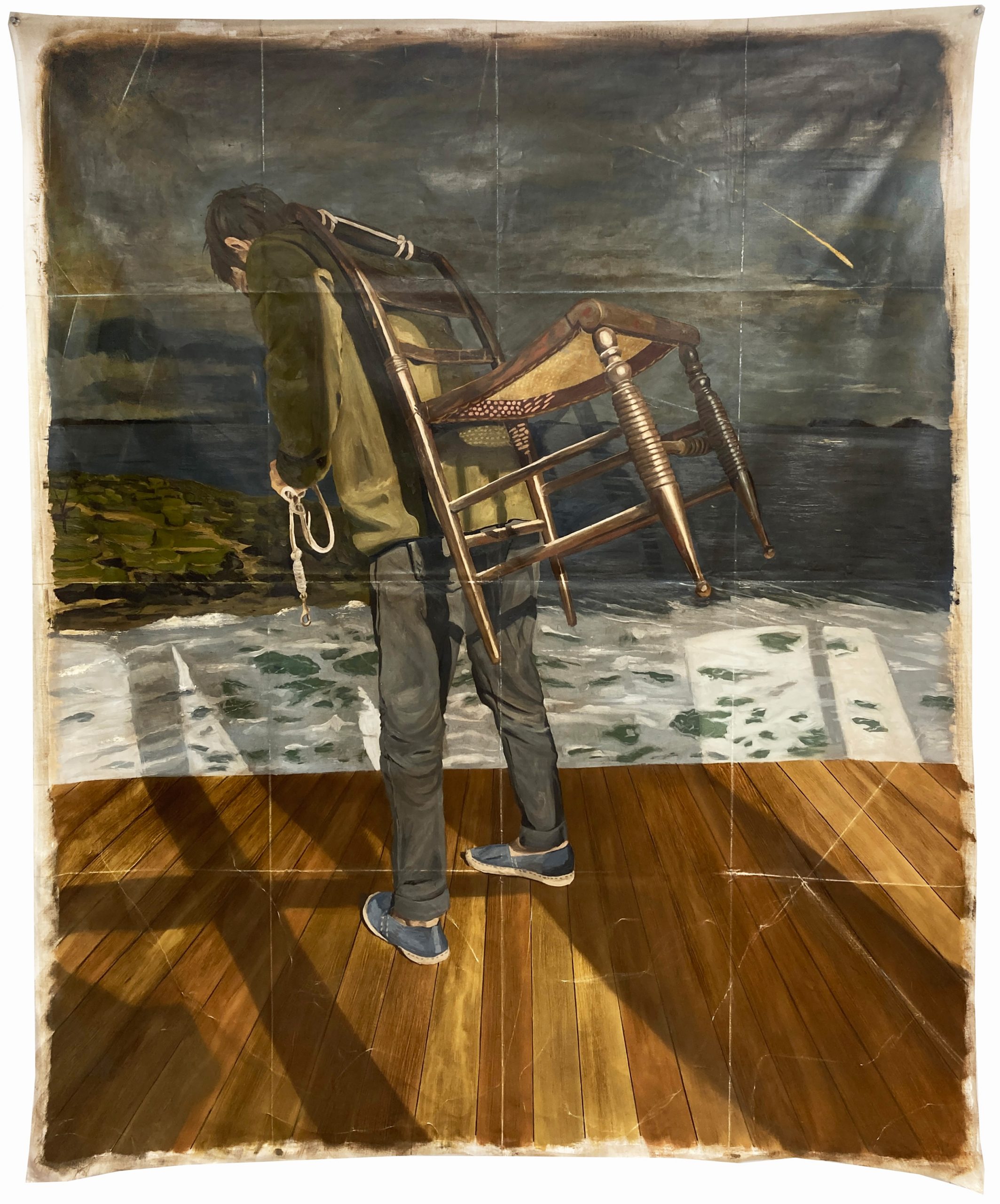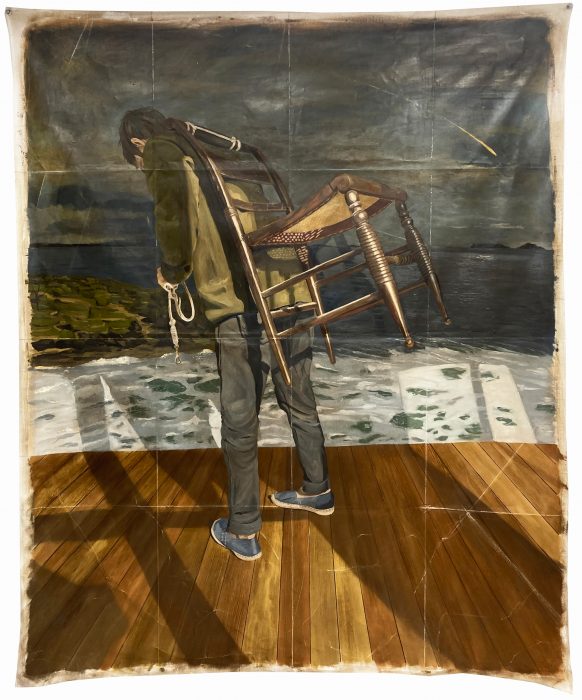April 10, 2024

Transcript by Gallery and Curatorial Fellow Calla Savelson

Transcript
In Eben Haines’ The Weight of Pulling, a lone figure stands with his back to us, carrying a chair and staggering towards the coast. Haines uses the same earthy tones that we see throughout the gallery and challenges our perceptions of space as his figure is situated in what seems to be a combination of both an interior and an exterior. In the background of the painting, we notice the dark shapes of the ocean but Haines’ figure seems to be on a stage, with window-shaped light pouring into the space, illuminating his scene.
For many of Haines’ portraits he uses himself as a model. While this is the most accessible way for Haines to paint people, using himself to construct his figures also represents how people who look like him fit into a bigger picture: much of the pain and harm caused in the world has been orchestrated by people who share his appearance, white men. Haines is recognizing that he is a beneficiary of the colonization, imperialism, and capitalism that the Western world has wrought across the globe. Playing this role is a complicated and introspective decision as Haines grapples with his own role in perpetuating systems of oppression and injustice. How can each of us come to terms with the space that we take up and the way in which we benefit from systems of inequality?
Haines’ figure seems to be struggling as he carries a chair on his back. Looking around the room, we see chairs in many of Haines’ pieces. He uses them in both his sculptures where he creates physical spaces as well as in his paintings. Chairs exist all over the world and hold human bodies. They are quiet objects and often go unnoticed as people look right past them. In this painting, no one is sitting in the chair. Having worked at the Museum of Fine Arts, Boston, Haines is familiar with the inequities present in the art world. Today, it is common for museums to place value on providing a “seat at the table” for historically underrepresented groups, but in actuality they have a long way to go before reaching real equity. Haines’ figure carrying an empty chair represents the false Diversity, Equity, and Inclusion initiatives that museums and other institutions hide behind. There is irony in Haines’ piece as he displays a white man apparently laboring as he carries this chair, keeping it in his possession, refusing to put it down and allow others to use it.
Eben Haines’ work calls into question how we interact with each other. How might Haines’ exploration of societal roles and preconceived notions within art institutions prompt us to reevaluate our own interactions and assumptions in these spaces?